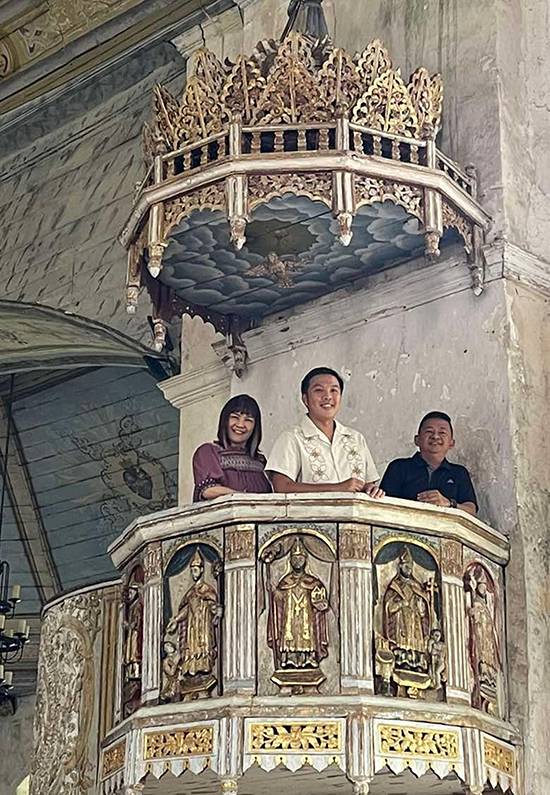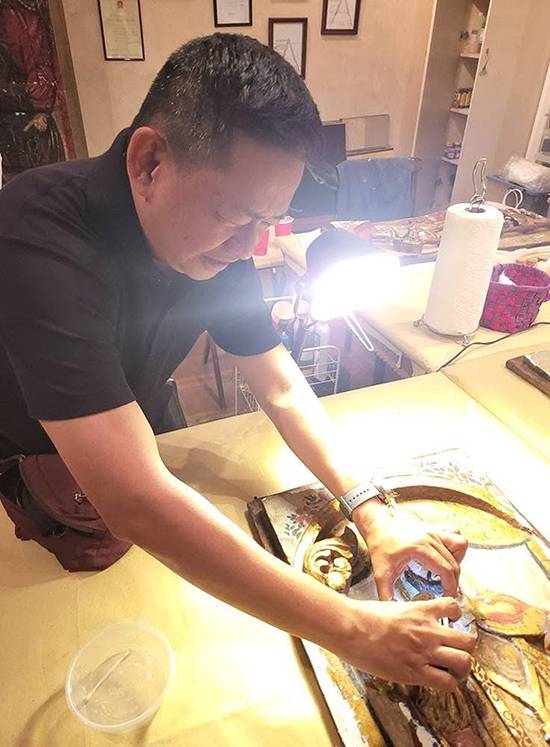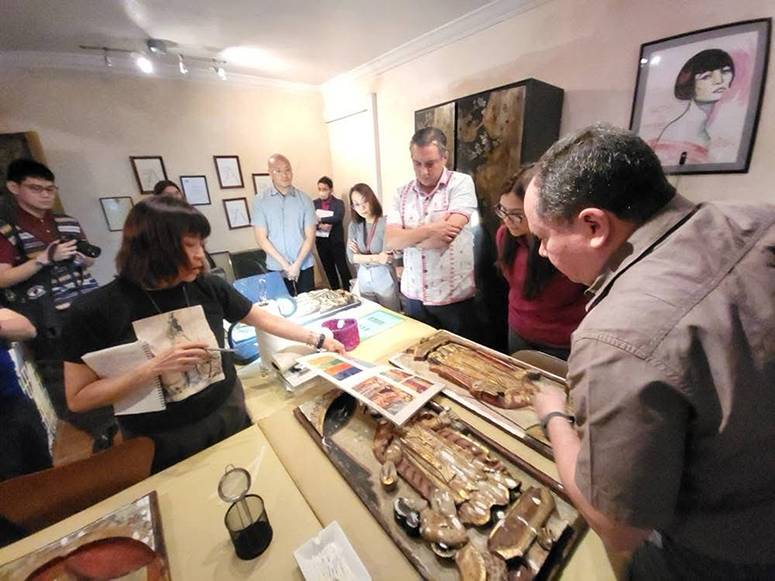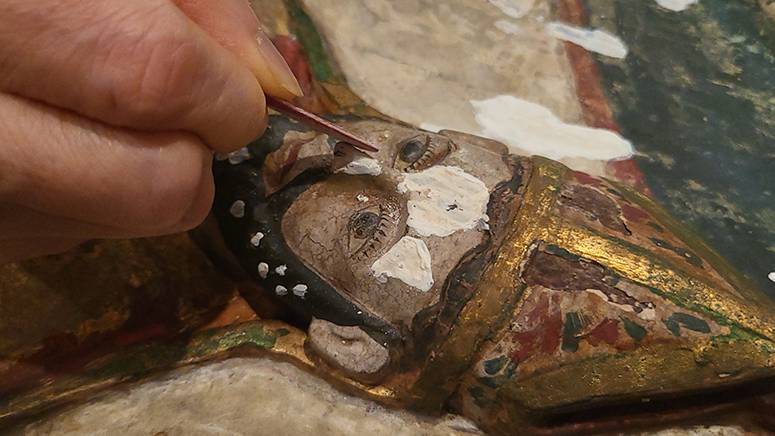The return of the Boljoon Panels: A journey of heritage and restoration
In the late 1980s, the Boljoon Church in Cebu suffered a heartbreaking loss. Five bas-relief panels, integral to the church’s pulpit and vital to the community’s heritage, were stolen during the tenure of Fr. Faustino Cortes. Despite decades of searching, their whereabouts remained a mystery, leaving the people of Boljoon to mourn the loss of these invaluable cultural assets.
Then, in November 2023, a breakthrough occurred. A member of the Cebu City Cultural and Historical Affairs Office saw four stolen panels during a newscast. The panels, described as early 19th-century bas-reliefs, were presented at Salcedo Auctions for a showcase of the collections of Edwin and Aileen Bautista. After the discovery of the attribution of the Bojloon panels, they agreed to donate the panels to the National Museum of the Philippines as a “gift to the nation.”

Negotiations followed between the Archdiocese of Cebu, Boljoon Parish, Gov. Gwendolyn Garcia of Cebu, the National Museum, and other key stakeholders. Ultimately, on May 8, 2024, the National Museum’s board of trustees approved of the repatriation, and the long-awaited return of the panels was finalized, marking a significant moment for the people of Boljoon.
Before the panels were officially returned, conservators were called to inspect them in July 2024. A team led by landscape architect Gabriel Caballero, director and principal consultant of Calahe Environmental Consultancy Services did the conservation work together with two experts, wood conservator, Dr. Cheek Fadriquela and art conservator, Liliane Tats Manahan. The Calahe team assessed the panels and devised a detailed conservation plan.

Dr. Fadriquela’s initial examination revealed that the panels were carved from tindalo (afzelia rhomboidea), a high-quality wood used in the 18th and 19th centuries. The wood showed signs of being hewn with traditional tools, and Roman numerals on the back likely indicated their original placement on the pulpit. Although one panel had been repaired in the past with staples and wood putty, the panels were surprisingly well-preserved, free from insect damage, fungal growth, or major cracks. However, a piece of a quill held by St. James the Greater on one panel was missing.
The panels were photographed in detail using specialized lighting equipment, including transmitted and raking light, to examine brushstrokes and surface degradation. Minimal and sensitive interventions to the paint was proposed with only slight retouching observed on the backgrounds, clothing, and faces under UV light.

X-Ray fluorescence analysis identified various pigments and metals used in the paint, including gold, copper and zinc-based gilding, lead white, cadmium vermilion, Prussian blue, and vermilion red, as as well as a protective coating that would need further examination. Based on these findings, conservators proposed a series of interventions: cleaning the panels, consolidating the wood and paint, reconstructing lost paint and the missing quill, and applying a protective varnish.
Starting in October 2024, Manahan commenced with the restoration of the panels, focusing on several key areas, specifically significant paint delamination, a separation of paint from its surface.
Cleaning the panels was the first step in her process. Using cotton, she cleaned the surface with Vulpex, a propriety cleaner, diluted with distilled water and 70-percent ethyl alcohol, revealing the vibrant colors beneath. Larger flat surfaces were cleaned with a Saugwanders sponge.

Once cleaned, the panels’ delaminating paint was stabilized using Paraloid B-72 dissolved in acetone. It forms a resin adhesive that can be used in various concentrations, depending on the application. For the panels, two different formulations were applied, depending on the severity of the paint separating from the wood.
Manahan’s approach to restoring the paint employed a meticulous restoration process which was not repainting or overpainting; it was the filling in of the unpainted portions using reversible conservation grade watercolor paints that are more durable and with longer lasting color. This palette matched the colors of the original paint: veridian, vermillion, Prussian blue, zinc white, lampblack, and burnt sienna. Various shades of yellow and browns were used to restore the missing portions of the original gold leaf, since various types of gold leaf were found in the original gold finish.
Following the guidelines of painting restoration developed by Cesare Brandi who founded the Instituto Centrale del Restauro in Rome in 1939, Manahan applied minimal interventions to respect the hand of the original artist’s work. She used lighter tones of paint (in sotto tono) and employed straight lines (rigatoni), Romano-lines (tratteggio) and dots (puntiglio) to infill the missing paint. These techniques served to subtly mark the restorer’s work while maintaining the integrity of the original artwork. Viewed from afar, the intervention is hardly detectable.

The restoration also addressed deeper cracks in the wood, using Paraloid B-72 and acetone to stabilize and glue the cracks. Smaller holes were filled, using a surgical syringe.
This careful restoration process required a collaborative effort, with regular reviews from the National Museum and various experts of conservation and painting restoration. This transparent approach ensured that the restoration was done with the utmost care and respect for the cultural significance of the panels. By February 2025, the restoration was fully completed.
The return of the panels to Boljoon was not just a triumph of technical expertise but also of cooperation and determination. It was a collective effort that involved the National Museum, the Archdiocese of Cebu, the local government, and the people of Boljoon, all working to safeguard their cultural heritage.
The hard work and dedication of all stakeholders culminated in the historic handover ceremony on March 13, 2025, at the Cathedral Museum of Cebu, attended by key figures such as Archbishop José S. Palma, Fr. Bryan Brigoli, chairman of the Cebu Archdiocesan Commission of the Cultural Heritage of the Church, Gov. Gwendolyn Garcia, Boljoon Mayor Joie Genesse N. Derama, and director general Jeremy Barns of the NM. This moment marked the culmination of decades of effort to return the panels to their rightful place. The repatriation of the Boljoon panels was a true celebration of heritage, community, and the shared responsibility of protecting our history.



